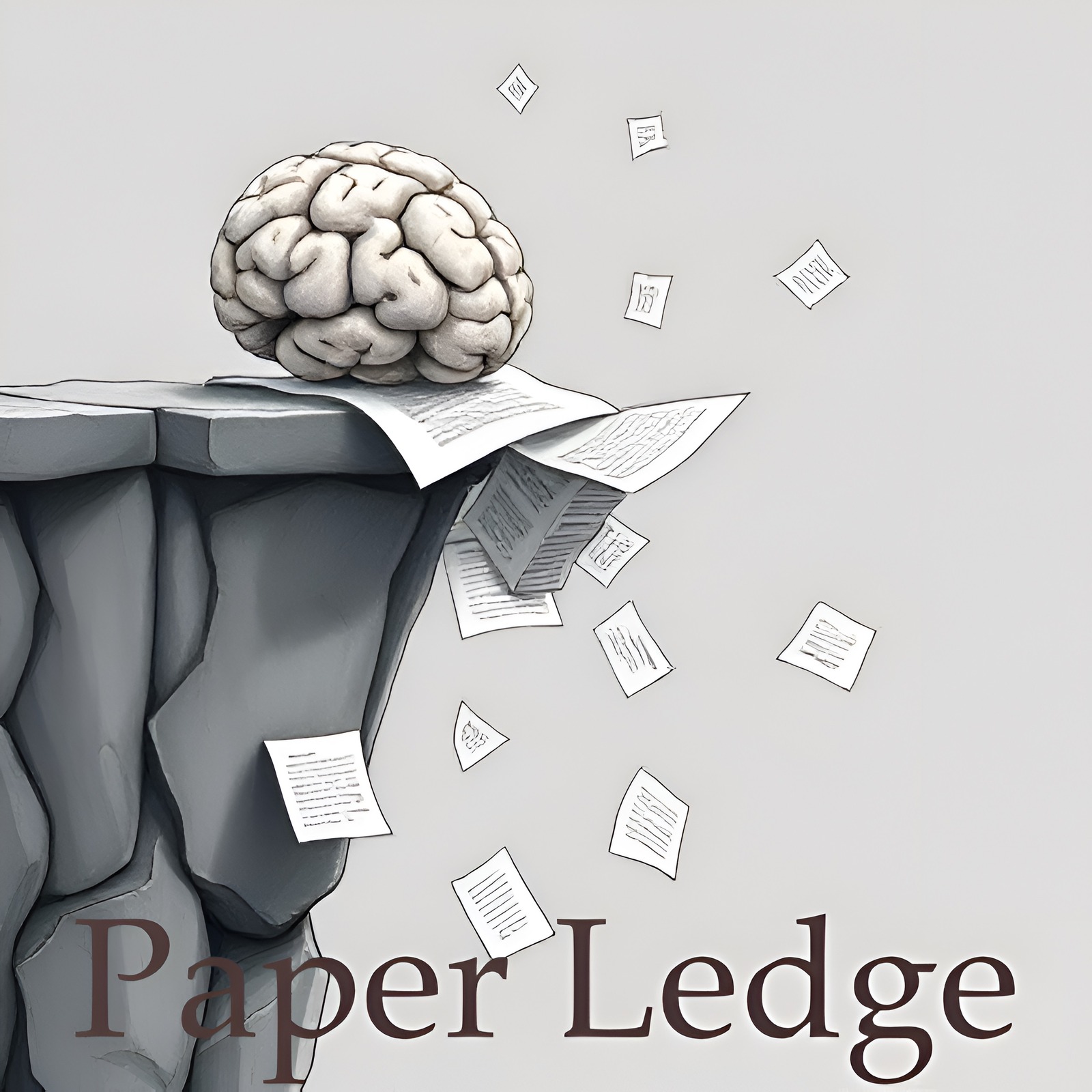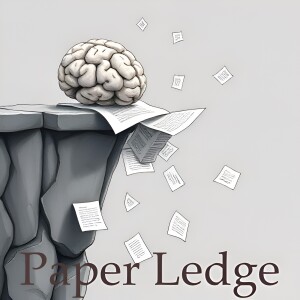PaperLedge

PaperLedge where research meets storytelling is a revolutionary podcast where cutting-edge research meets AI-powered storytelling. Hosted by the Ernis, whose blend of gentle reassurance, cosmic wonder, explanatory clarity, and enthusiastic charm makes complex research accessible to everyone. Each episode, Ernis transforms the latest academic papers into engaging, jargon-free audio experiences that deliver key insights in digestible formats. Whether you’re a researcher seeking interdisciplinary perspectives, a student supplementing your studies, or simply curious about scientific breakthroughs, PaperLedge has something for you.
Episodes
Episodes



Wednesday Jun 04, 2025
Wednesday Jun 04, 2025
Hey PaperLedge crew, Ernis here, ready to dive into some seriously cool video magic! Today, we're unpacking a paper about a new way to make videos using AI, and it's all about controlling the light and look of things with incredible precision. Think of it like being a Hollywood lighting director, but instead of using giant lamps, you're using AI. The paper's calling it IllumiCraft.
So, imagine you want to create a video of a cat playing in a sunbeam. Existing AI models are pretty good at generating the cat and the general scene, but they often struggle with getting the lighting just right, and keeping it consistent throughout the entire video. That's where IllumiCraft comes in. It's a diffusion model, which is a fancy way of saying it starts with random noise and gradually refines it into a coherent image or video, guided by what you tell it to create.
What makes IllumiCraft special is that it uses three key ingredients to get that perfect lighting and consistent appearance:
HDR Video Maps: Think of these like detailed blueprints of light. They capture the intensity and direction of light in a scene, giving the AI a very clear understanding of how things should be illuminated. It's like giving the AI a super-detailed lighting cheat sheet.
Synthetically Relit Frames: This is where the AI gets to play around with different lighting scenarios. The researchers created images where they artificially changed the lighting, showing the AI how the same object looks under different conditions. It's like teaching the AI about light and shadow by showing it lots of examples. Plus, they can add a static background image to keep things grounded.
3D Point Tracks: This is all about geometry. The AI uses information about the 3D shape of objects in the scene to understand how light will interact with them. It's like giving the AI a 3D model of everything, so it knows how the light should bounce off surfaces.
By combining these three inputs, IllumiCraft can create videos where the lighting is not only beautiful but also completely consistent from frame to frame. No more flickering shadows or weird color shifts! It's like having a virtual lighting director ensuring every shot is perfect.
So, why does this matter? Well, think about the possibilities:
Filmmakers: Could use this to pre-visualize scenes and experiment with different lighting setups before even setting foot on set.
Game Developers: Could create more realistic and immersive game environments with dynamic and believable lighting.
Advertisers: Could create stunning product videos that showcase their products in the best possible light (pun intended!).
Anyone Creating Content: Imagine being able to easily relight your home videos or create fantastical scenes with perfect lighting.
The paper claims that IllumiCraft produces videos with better fidelity and temporal coherence than existing methods. That means the videos look more realistic and the lighting stays consistent over time. Pretty cool, right?
Now, I'm left wondering:
Could this technology eventually be used to restore old films with damaged lighting?
What kind of artistic styles could be achieved by manipulating the HDR video maps in unexpected ways?
How much computational power does this require, and could it eventually be accessible to average users on their personal computers?
This is a fascinating step forward in AI-powered video creation, and I'm excited to see where this technology goes. You can check out the project page at yuanze-lin.me/IllumiCraft_page to see some examples of what it can do. Let me know what you think, PaperLedge crew! Until next time, keep learning!Credit to Paper authors: Yuanze Lin, Yi-Wen Chen, Yi-Hsuan Tsai, Ronald Clark, Ming-Hsuan Yang



Tuesday Jun 03, 2025
Tuesday Jun 03, 2025
Hey learning crew, Ernis here, ready to dive into some fascinating research! Today, we're cracking open a paper about making our voice-activated gadgets even better at understanding what we want. Think about saying "Hey Siri" or "Okay Google" – the tech that listens for those keywords is called Keyword Spotting, or KWS for short.
This paper focuses on a specific type of KWS system that uses something called an RNN-T with autoregressive decoding. Don't worry about the jargon! Think of it this way: Imagine you're teaching a robot to listen. The RNN-T is like the robot's ear and brain, and autoregressive decoding is like the robot trying to predict what you're going to say next, based on what it's already heard. It's like a clever guessing game!
Now, the problem is, sometimes this robot gets a little too eager to guess. The paper points out that the prediction part of the RNN-T, while simple, can sometimes overfit. Overfitting is like when a student memorizes the answers to a practice test instead of actually understanding the material. So, when the real test comes, they're stumped! In our KWS example, this means the system becomes too reliant on predicting based on limited information, leading to mistakes in noisy environments or with different speaking styles.
So, how do we prevent this over-eager guessing? That's where the magic happens. The researchers came up with a cool training strategy called masked self-distillation or MSD. Think of it as giving the robot practice tests where some of the answers are hidden. This forces the robot to rely less on its initial guesses and pay more attention to the actual audio input.
And here's where it gets really interesting: this MSD training opens the door to a new way of decoding called masked non-autoregressive or NAR decoding. Imagine completely muting the robot's ability to guess! Instead, it only focuses on what it hears. This is particularly helpful in situations where the robot is likely to make bad guesses, like in a noisy room.
But wait, there's more! The researchers didn't stop there. They also created a semi-autoregressive or SAR decoding approach. This is like giving the robot the option to guess, but only when it's feeling confident. It's the best of both worlds!
The results? Amazing! The researchers tested their MSD training and SAR decoding on several different KWS datasets. And guess what? It worked! The MSD training helped prevent overfitting, and the SAR decoding gave the system the accuracy of guessing when appropriate, while avoiding the pitfalls of over-reliance on prediction.
So, why does this matter? Well, imagine a world where your voice assistant understands you perfectly, even in a crowded coffee shop. Or a smart home that responds accurately to your commands, no matter how you pronounce them. This research is a step towards making that a reality!
Think about accessibility for people with speech impediments. Could this research lead to more accurate voice recognition for everyone?
How might this impact the development of more personalized and adaptive voice assistants?
"The SAR decoding method preserves the superior performance of AR decoding while benefits from the overfitting suppression of NAR decoding, achieving excellent results."
So, as we wrap up, let's think about these questions: Could this approach be applied to other areas of AI, like image recognition or natural language processing? And what ethical considerations arise as voice assistants become increasingly sophisticated and integrated into our lives?
That's all for today, learning crew. Until next time, keep those questions coming!Credit to Paper authors: Yu Xi, Xiaoyu Gu, Haoyu Li, Jun Song, Bo Zheng, Kai Yu



Tuesday Jun 03, 2025
Tuesday Jun 03, 2025
Hey PaperLedge crew, Ernis here, ready to dive into another fascinating piece of research! Today, we're talking about something super relevant in our AI-driven world: how well can large language models, or LLMs – you know, the brains behind chatbots and AI assistants – actually think like a physicist?
Now, we've all seen these AI models do amazing things. They can write poems, translate languages, and even generate code. But when it comes to something like physics, which requires not just knowledge but also a deep understanding of fundamental principles, things get a bit trickier.
This paper highlights a key problem: while LLMs can spit out answers to physics problems, they often do it in a roundabout, clunky way. Think of it like this: imagine asking someone for directions. A human expert might say, "Head north for two blocks, then turn east." An LLM, on the other hand, might give you a mile-long list of every single turn and landmark, even including details like "pass the bakery on your left with the blue awning." Both get you to the destination, but one is way more efficient and easier to understand!
So, to really test how well LLMs understand physics principles, the researchers created something called PhySense. This isn't just another physics test; it's specifically designed to be easily solvable by humans who grasp the core concepts, but incredibly challenging for LLMs if they try to brute-force their way through without applying those principles. It's like creating a maze with a hidden shortcut that only those who truly get the underlying rules can find.
The PhySense benchmark is really clever because it uncovers whether the LLM is just memorizing patterns or genuinely grasping the underlying physics. For instance, a problem might involve understanding the principle of conservation of energy to quickly find the solution. If an LLM misses that core principle, it will struggle, even if it has seen similar problems before.
"PhySense...designed to be easily solvable by experts using guiding principles, yet deceptively difficult for LLMs without principle-first reasoning."
The researchers put a bunch of state-of-the-art LLMs to the test, using various prompting techniques to try and guide them. And guess what? Across the board, the LLMs struggled to reason like expert physicists. They just couldn't seem to consistently apply those fundamental principles in an efficient and interpretable way.
This is a pretty big deal because it shows that even though LLMs are getting incredibly powerful, they still have a long way to go when it comes to true, principle-based scientific reasoning. It highlights the difference between knowing what to do and understanding why.
So, why does this research matter?
For AI developers: It points to a crucial area for improvement. We need to find ways to build LLMs that can reason more like humans, applying core principles to solve problems efficiently and transparently.
For scientists: It suggests that while LLMs can be helpful tools, they're not quite ready to replace human intuition and understanding in scientific research. We still need that "aha!" moment that comes from deeply understanding the underlying principles.
For everyone else: It reminds us that AI, while powerful, is still a tool. We need to be critical of its outputs and ensure that it's being used responsibly and ethically. Think about medical diagnoses or climate change modeling – we need AI that can not only provide answers but also explain why those answers are correct.
This research raises some interesting questions, doesn't it? For example: Could we train LLMs using a different kind of data, focusing more on the underlying principles rather than just memorizing examples? And what impact will this have on the future of scientific discovery and the role of human experts in the field?
That's all for this episode, learning crew. I'm curious to hear your thoughts on this. Let me know what you think, and until next time, keep exploring the PaperLedge!Credit to Paper authors: Yinggan Xu, Yue Liu, Zhiqiang Gao, Changnan Peng, Di Luo



Tuesday Jun 03, 2025
Tuesday Jun 03, 2025
Alright learning crew, Ernis here, and welcome back to PaperLedge! Today, we're diving into some fascinating research about how well AI can actually understand and communicate in the legal world. I know, legal stuff can sound intimidating, but trust me, this is super relevant to everyone.
Think of it this way: We’re all increasingly interacting with AI, right? Maybe it's helping you draft an email, summarize a document, or even answer simple legal questions. But how can we be sure the AI is actually good at it? Like, is it just spitting out facts, or is it actually making sense and using language that a lawyer – or even you – would understand?
That's the problem this paper tackles. The researchers noticed that current tests for legal AI are mostly focused on whether it gets the facts right. Does it know the date of a specific court case? Can it correctly identify the relevant laws? But they argued that's only part of the picture. What about the quality of the language the AI uses? Is it clear, coherent, and using the right legal terminology?
Imagine asking an AI to explain a complicated contract clause. It might get all the facts right, but if it explains it in a confusing, jargon-filled way, it's not really helpful, is it? It's like trying to follow a map where all the street names are misspelled. You might eventually get there, but it'll be a frustrating journey!
So, how did they approach this? They basically built a three-step evaluation system:
Step 1: Quality Checker They created a special computer program that can judge how good legal writing is based on things like clarity, coherence, and accurate use of legal terms. Think of it as a grammar and style checker, but specifically for legal documents.
Step 2: Legal Question Bank They put together a bunch of legal questions that are designed to really test the AI's understanding and communication skills.
Step 3: The Showdown! They then took 49 different AI models – those big Language Learning Models (LLMs) we always hear about – and put them through this evaluation framework to see how they performed.
And here's what they found – some really interesting stuff:
Finding 1: Size Isn't Everything Turns out, making the AI bigger (adding more parameters, which is like adding more connections in a brain) only helps up to a point. After about 14 billion parameters, the improvements become really small. It's like adding more water to a bucket that's already full – you don't get much extra.
Finding 2: Tweaks Don't Matter Much Little engineering tricks, like how the data is stored or how much context the AI can consider at once, didn't seem to make a big difference.
Finding 3: Reasoning Rules! The AI models that were specifically designed to reason and think logically performed much better than the simpler, "base" models. This makes sense, right? Legal work requires a lot of careful reasoning!
"A significant outcome of our research is the release of a ranking list and Pareto analysis, which highlight the Qwen3 series as the optimal choice for cost-performance tradeoffs."
One of the coolest things they did was create a ranking list of these AIs, showing which ones give you the best performance for the cost. They highlighted a series called "Qwen3" as a particularly good option. So, if you're looking for a legal AI, this research gives you some solid data to make a smart choice.
Why does this matter?
For Lawyers: This research helps identify which AI tools are actually useful and reliable for legal tasks. It's like having a Consumer Reports for legal AI!
For AI Developers: It shows where the current AI models are falling short and what areas need more improvement. It highlights that it's not all about size, but about reasoning and quality.
For Everyone Else: As AI becomes more involved in our legal system, it's important to make sure it's being used responsibly and effectively. This research helps us understand the limitations and potential of these tools.
This research also points out that we need better training data for these AIs. Right now, they're often trained on data that isn't high quality or doesn't reflect the nuances of legal language. It's like trying to teach someone to cook using only fast-food menus – they might learn the basics, but they won't become a chef!
They’ve even made their code and models available online, so other researchers can build on their work! You can find it at https://github.com/lyxx3rd/LegalEval-Q.
So, what questions does this bring up for us?
Given that size isn't everything, how can we make smaller AI models more effective at legal reasoning?
How can we create better training data that truly captures the nuances and complexities of legal language?
As AI becomes more prevalent in the legal field, how do we ensure that it's used ethically and fairly, and doesn't perpetuate existing biases?
That’s all for today’s dive into PaperLedge, learning crew! I hope you found this breakdown of legal AI evaluation insightful. Until next time, keep those gears turning!Credit to Paper authors: Li yunhan, Wu gengshen



Tuesday Jun 03, 2025
Tuesday Jun 03, 2025
Alright learning crew, Ernis here, ready to dive into another fascinating paper! Today, we're tackling a challenge in the world of computers reading Chinese – specifically, Chinese Character Recognition, or CCR.
Think about it: we're used to computers easily recognizing letters, right? A, B, C… easy peasy. But Chinese characters? They’re a whole different ball game. They're not just simple lines; they're intricate combinations of strokes and radicals (think of them like building blocks) that carry a ton of meaning.
This paper highlights that existing CCR methods often struggle because they treat each character as a single, monolithic thing. It’s like trying to understand a whole sentence without looking at the individual words and how they relate to each other.
So, what did these researchers do? They created something called Hi-GITA, which stands for Hierarchical Multi-Granularity Image-Text Aligning framework. Deep breath Don't worry about the name! The key is that it's all about looking at Chinese characters on multiple levels.
Imagine you're learning to draw a complex picture. You wouldn't just try to copy the whole thing at once, right? You'd break it down: first, the basic shapes, then the outlines, then the details. Hi-GITA does something similar.
Image Multi-Granularity Encoder: This is like the artist who first looks at the strokes and then at the overall composition of the character. It extracts information from the image at different levels – from individual strokes to the complete character.
Text Multi-Granularity Encoder: This is like understanding the character's meaning by looking at its radicals (the building blocks) and how they’re arranged. It creates a text representation of the character at different levels of detail.
Multi-Granularity Fusion Modules: This is where the magic happens! These modules connect the dots between the image and text information at each level. Think of it as understanding how a particular stroke contributes to the meaning of a specific radical.
But how do you teach a computer to connect the image and text representations? That's where the Fine-Grained Decoupled Image-Text Contrastive loss comes in. Basically, it's a way of training the system to recognize the relationships between the visual and textual elements of a character. It encourages the system to bring closer the representations of the same character and push apart the representations of the different characters. It's like showing the system examples of what's right and what's wrong, so it learns to distinguish between them.
The researchers tested Hi-GITA on a bunch of Chinese characters, including handwritten ones. And guess what? It blew the existing methods out of the water! In some cases, it improved accuracy by a whopping 20%, especially for handwritten characters and radicals. That's a huge leap!
"Our proposed Hi-GITA significantly outperforms existing zero-shot CCR methods. For instance, it brings about 20% accuracy improvement in handwritten character and radical zero-shot settings."
So, why does this matter?
For everyone: Think about automatically translating handwritten notes, digitizing ancient texts, or even just making it easier to search for information in Chinese online. This technology has the potential to unlock a world of knowledge.
For developers: This research provides a new approach to CCR that can be used to improve the accuracy and efficiency of existing systems.
For researchers: This paper opens up new avenues for exploring the use of multi-granularity representations in other areas of computer vision and natural language processing.
The researchers are planning to release their code and models soon, which means other researchers and developers can build upon their work.
Okay, learning crew, that’s the gist of the paper. Pretty cool, right?
Here are a few things that popped into my head while reading this:
Could this multi-granularity approach be applied to other languages with complex writing systems, like Japanese or Korean?
How might Hi-GITA be adapted to recognize different styles of handwriting or even damaged or faded characters in historical documents?
Given that strokes and radicals carry meaning, could this method be extended to help teach people Chinese characters more effectively?
Let me know what you think! What other questions does this paper raise for you? I'm always eager to hear your thoughts. Until next time, keep learning!Credit to Paper authors: Yinglian Zhu, Haiyang Yu, Qizao Wang, Wei Lu, Xiangyang Xue, Bin Li



Tuesday Jun 03, 2025
Tuesday Jun 03, 2025
Alright PaperLedge learning crew, Ernis here, ready to dive into something that could seriously change how engineers and designers work! We're talking about AI, but not just any AI – AI that can actually learn how to use complex 3D design software, you know, like CAD.
Now, think of CAD like a super-powerful version of LEGOs, but instead of building a house, you're designing a car engine, a skyscraper, or even a new type of airplane wing. It's precise, it's intricate, and it takes years to master.
The problem is, teaching an AI to use CAD is hard. Existing AI training data just isn't up to the task. It's like trying to teach someone to drive a Formula 1 car by only showing them videos of go-karts. That's where this paper comes in!
These researchers have created something called VideoCAD. Think of it as a massive training library specifically designed for AI to learn CAD. We're talking over 41,000 videos of CAD operations! That's like watching someone build a virtual world, one click and command at a time.
What makes VideoCAD so special? Well:
It's huge, way bigger and more complex than any other dataset out there.
It focuses on real-world engineering tasks, not just simple button clicks.
It captures the entire design process, not just snippets. This means the AI can learn to plan ahead and understand long-term goals.
"VideoCAD offers an order of magnitude higher complexity in UI interaction learning for real-world engineering tasks, having up to a 20x longer time horizon than other datasets."
Now, what can you do with VideoCAD? The researchers highlight two key applications:
Teaching AI to perform CAD tasks: They developed a model called VideoCADFormer that can watch these videos and learn how to actually use the CAD software itself. Imagine AI assisting engineers with repetitive tasks or even suggesting design improvements!
Testing AI's understanding of 3D space: They created a visual question-answering (VQA) benchmark. This is like giving the AI a CAD design and asking it questions like, "What's the distance between these two points?" or "How many holes are there on this surface?" This tests the AI's spatial reasoning and video understanding abilities.
The results? While their VideoCADFormer model is a great first step, it also highlights the remaining challenges. AI still struggles with things like understanding exactly where an action is being performed on the screen, reasoning about 3D space, and remembering what happened earlier in a long, complex task.
So, why should you care? Well:
For engineers and designers: This research could lead to AI assistants that automate tedious tasks, freeing up your time for more creative work.
For AI researchers: VideoCAD provides a challenging new benchmark for testing and improving AI's ability to understand and interact with complex environments.
For everyone else: This is a glimpse into the future of human-computer interaction, where AI can truly understand and assist us in complex tasks, potentially revolutionizing industries from manufacturing to architecture.
This research points out some crucial areas where AI needs to improve. Things like precise action grounding (knowing exactly where the user is clicking), multi-modal reasoning (understanding both the visual information and the text commands), and handling long-horizon dependencies (remembering what happened several steps ago).
It's a really exciting area, but it’s still early stages.
Here are some questions I find myself pondering after reading this:
If AI can learn CAD, what other complex professional tools could it master? Could we see AI-powered assistants for fields like surgery or scientific research?
How can we ensure that these AI CAD assistants are actually helpful and don't just create new problems or introduce errors? Think about the potential for AI to reinforce existing biases in design.
What ethical considerations arise when we start automating creative tasks like design? How do we ensure that human creativity remains at the heart of the design process?
Alright learning crew, that's all for this paper! Hopefully, this has given you a taste of the exciting developments happening at the intersection of AI and design. Until next time, keep those gears turning!Credit to Paper authors: Brandon Man, Ghadi Nehme, Md Ferdous Alam, Faez Ahmed



Tuesday Jun 03, 2025
Tuesday Jun 03, 2025
Hey PaperLedge learning crew, Ernis here, ready to dive into some fascinating research about how we teach AI to understand what we like. You know how sometimes you ask for restaurant recommendations and get something totally off base? Well, that's kind of what this paper tackles, but on a much grander scale with AI!
So, the core idea revolves around something called reward modeling. Think of it like training your dog. You give treats (rewards) for good behavior and withhold them for bad. In the world of AI, especially with those massive language models (LLMs) like the ones powering chatbots, reward modeling is used to align the AI's behavior with human preferences. Researchers use something called Reinforcement Learning from Human Feedback (RLHF) to make it happen. So, we ask humans for feedback and reward the AI when it does what we like. Simple, right?
Well, not so fast. This paper points out a major flaw in the traditional approach. It's like assuming everyone has the exact same taste in music. The standard method uses something called the Bradley-Terry (BT) model, which essentially assumes there's one universal "good" answer. But we all know that's not true! What I find funny, you might find offensive. What one person finds helpful, another might find completely useless.
"Theoretically, we show that when human preferences follow a mixture distribution of diverse subgroups, a single BT model has an irreducible error."
That's academic-speak for saying: if different groups of people like different things, you can't make one AI model that pleases everyone using the standard methods. It's bound to make mistakes and have what the paper calls an "irreducible error".
Think of it like trying to bake a cake that everyone in the world will love. Some people want chocolate, some want vanilla, some are allergic to gluten, and some hate frosting. You're never going to make a single cake that makes everyone happy!
So, what's the solution? Well, some researchers have tried to solve this with very detailed feedback and categorizing the preferences. But that gets really expensive and still doesn’t capture the nuances. This paper introduces a new framework called MiCRo, short for something a bit more technical, but you can think of it as a "preference personalization engine".
MiCRo works in two stages. First, it tries to understand that different people like different things, based on the context of the request. It uses something called "context-aware mixture modeling" to figure out these different groups and their preferences. So, it's trying to figure out, "Okay, this person is asking about comedy, so I should cater to preferences for humor." Then, in the second stage, it uses an "online routing strategy." This means that as the AI interacts with users, it dynamically adjusts its responses based on what it's learning about their individual preferences. It's like a smart waiter who remembers your favorite drink and adjusts their recommendations accordingly.
The beauty of MiCRo is that it doesn't need a ton of extra, detailed feedback. It learns from the existing preference data but figures out who likes what based on the context of the conversation.
The paper shows that MiCRo significantly improves personalization. It's like finally getting those restaurant recommendations that are actually good because the system understands your taste!
So, why does this matter?
For AI developers, this is a more effective way to train AI to be more responsive to individual users, and it is cheaper.
For businesses, this means that AI-powered tools, like chatbots, can provide much better customer service and personalized recommendations.
For end-users, this means that AI becomes more helpful and less frustrating, adapting to your unique needs and preferences.
Here are a couple of things that made me curious while reading this paper:
How do we ensure that MiCRo doesn't reinforce existing biases or create filter bubbles by only showing people what it thinks they want to see?
Could MiCRo be used to understand not just personal preferences, but also cultural or societal values, and how could that be used responsibly?
That's MiCRo in a nutshell! A step towards AI that understands and respects the diversity of human preferences. What do you think, learning crew? Let me know your thoughts!Credit to Paper authors: Jingyan Shen, Jiarui Yao, Rui Yang, Yifan Sun, Feng Luo, Rui Pan, Tong Zhang, Han Zhao



Tuesday Jun 03, 2025
Tuesday Jun 03, 2025
Alright PaperLedge crew, Ernis here, ready to dive into some fascinating research! Today, we're talking about making big brains smaller...and smarter! Think of it like this: you've got a super-genius professor, and we want to teach all their amazing knowledge to a bright but much younger student. The paper we're looking at explores a new way to do just that with AI models, specifically in the realm of reasoning.
These massive reasoning models, like DeepSeek-R1 or OpenAI's o1, are incredible at solving complex problems. But they're also huge and power-hungry! So, the idea is to "distill" their knowledge into smaller, more efficient models. It's like taking all the wisdom from a giant encyclopedia and condensing it into a pocket-sized guide. The problem is, the usual way to do this involves throwing away a lot of learning material.
Normally, when we teach the little AI student, we only show it the correct answers and reasoning steps. If it gets something wrong, we just toss that example out. It's like saying, "Okay, forget you ever tried that wrong path, let's just focus on what's right." But this paper asks a really smart question: what if we could learn from the mistakes too? After all, we humans learn just as much from our failures as we do from our successes!
The researchers introduce a new method called REDI, which stands for Reinforcement Distillation. It's a two-step process. First, they do the usual thing: Supervised Fine-Tuning (SFT). They show the student model all the correct reasoning examples. It's like giving the student a solid foundation.
Step 1: Teach the student the right way to do things (Supervised Fine-Tuning).
Step 2: Now, use both the correct AND incorrect reasoning examples to further refine the model.
But here's the cool part: Step 2. They use a special loss function (don't worry about the technical details!), that helps the model learn from both the positive (correct) and negative (incorrect) reasoning examples. It's like saying, "Okay, you got this problem wrong, but let's analyze why you got it wrong and learn from that mistake." Think of it as learning what not to do! They found that their method, REDI, works better than just showing the student the right answers, or even trying to combine the correct answers with other common techniques like DPO or SimPO.
To put it simply, REDI is like having a teacher that not only shows you the right path but also explains why the wrong paths are wrong, helping you avoid them in the future!
The results are pretty impressive! They trained a model called Qwen-REDI-1.5B (that's a relatively small model) on a dataset of both correct and incorrect reasoning examples from a bigger model. And guess what? It crushed it on math problems!
"The Qwen-REDI-1.5B model achieves an 83.1% score on MATH-500 (pass@1). Its performance matches or surpasses that of DeepSeek-R1-Distill-Qwen-1.5B...establishing a new state-of-the-art for 1.5B models post-trained offline with openly available data."
Not only did it do incredibly well, but it even outperformed a larger model that was trained on much more data (800k examples versus REDI's 131k) that wasn't even publicly available! That’s huge!
So, why does this matter? Well, think about it: smaller, more efficient AI models are cheaper to run, easier to deploy, and more accessible. This research shows that we can get these smaller models to perform at a really high level by being smarter about how we train them. It means potentially bringing advanced reasoning capabilities to more people and more applications.
For students, this could mean better AI tutors. For businesses, it could mean more efficient AI assistants. And for researchers, it opens up a whole new avenue for exploring how AI learns and reasons.
Here are a couple of questions that come to mind:
Do you think this approach of learning from mistakes could be applied to other areas of AI, like image recognition or natural language processing?
If negative examples are so helpful, why aren't we using them more often in AI training? What are the challenges?
That's all for this episode, learning crew! Hope you enjoyed diving into the world of model distillation and the power of learning from our mistakes. Until next time, keep exploring!Credit to Paper authors: Shuyao Xu, Cheng Peng, Jiangxuan Long, Weidi Xu, Wei Chu, Yuan Qi







